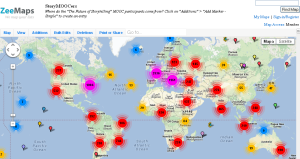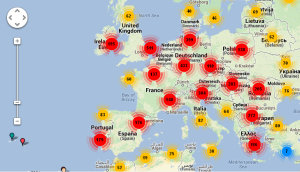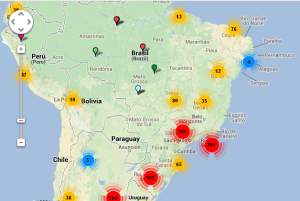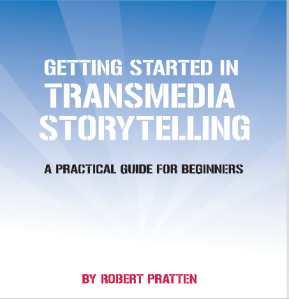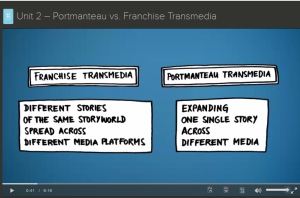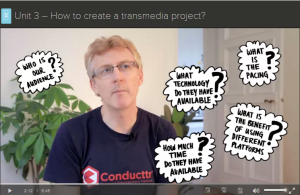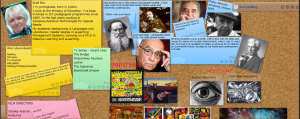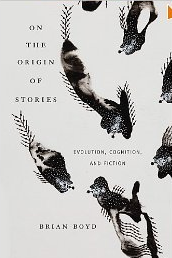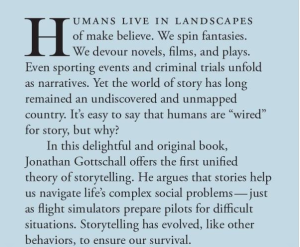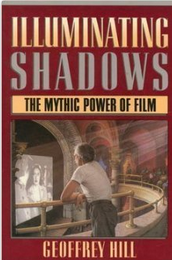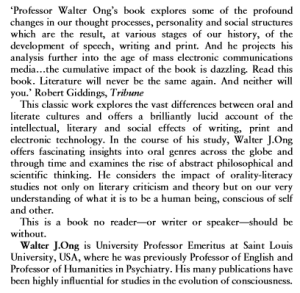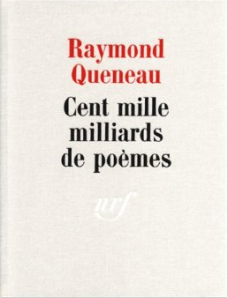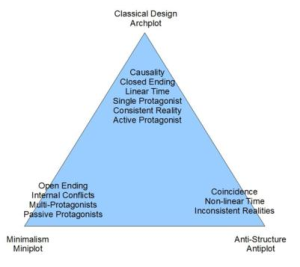STORYTELLING
15 December 2013
«THE FUTURE OF STORYTELLING» MOOC has ended.
My thanks to the Design Department at the University of Applied Sciences Potsdam and iVersity platform.
Seasons Greetings from Portugal to Storytelling MOOCers and Team
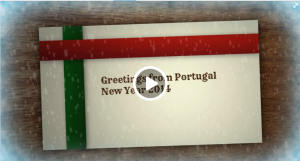 https://www.wevideo.com/view/127415934
https://www.wevideo.com/view/127415934
14 December
It is the last chapter of the course continuing the theme on Transmedia.
As a final reflexion, this MOOC had a fresh look the way it was organized and presented. It was a long course, some chapters deserved more time to explore, but the advantage of open courses is that we can revisit the resources and exlore all the links shared by participants.
I haven’t participated in Facebook page of this MOOC just left a thanks message at the end of the course. In Twitter I’ve just left a link for my Storytelling eportefolio.
Some interesting links for projects and companies which produce transmedia were made available:
The Writing House of Cornelia Funke – a multimedia interface that transports to other pages
Mirada, a storytelling design studio. MirrorWorld is one of the projects, written by Cornelia Funke, a living book, a digital interpretation, non linear story. They produce videoclips and advertising as well.
Honig Studios, storytelling studio. Spiral, one of their works. Milli, an interactive children’s story.
From the discussion line I took some links such as A co-operative Graphic Novel – Haley Moore storytelling
Alone, a VR story
11 December
StoryMOOCers in World Map
Portuguese language Community
10 December
The creative task for this week was to create a transmedia project together.
HOW? Meet Aunt Renie.
Renie is a little, elderly lady, who’s always enjoyed lots of company. When her best friend dies, she decides to not be sad but instead use the time left to travel the world and explore as many new countries and cultures as she can.
Help Renie travel the world:
Write, draw, compose, film, design Aunt Renie little adventure in your neighbourhood. Tell a day in her life in your hometown, write down a recipe she has collected, or paint the contents of her suitcase.
You are absolutely free in regard to what medium or format you use to tell your story. Just make it about Aunt Renie and her adventures.
So I’ve created a Powtoon with Aunt Renie in Lisbon
As in Chapter 3 it was proposed to create a character related to Aunt Renie, I decided to create another Powtoon A Man from Africa
8 December
Chapter 8 is dedicated to transmedia, meaning that a story is told in different media platforms. Definition in wikipedia:
«Transmedia storytelling (also known as transmedia narrative or multiplatform storytelling) is the technique of telling a single story or story experience across multiple platforms and formats using current digital technologies. It is not to be confused with traditional cross-platform media franchises, sequels or adaptations.
From a production standpoint, it involves creating content that engages an audience using various techniques to permeate their daily lives. In order to achieve this engagement, a transmedia production will develop stories across multiple forms of media in order to deliver unique pieces of content in each channel. Importantly, these pieces of content are not only linked together (overtly or subtly), but are in narrative synchronization with each other.»
Robert Pratten is invited to speak about the theme and his book is available for free in his website:
Differences are established in trnasmedia genres: franchise and portmanteau
Transmedia requires the creator to think more about the user’s experience:
2 December
Chapter 6 focus on location-based storytelling games and augmented reality games. With a speial guest that explains how the game Secret City works, around the city of Berlin.
Examples of other games:
In the discussion was shared a link for a travel game to visit Porto – http://www.travelplot.com/en/
The message that opened this week chapter mentioned some interesting links of participants’ works:
A german participant presented a visual synthesis of the different chapters of this MOOC – http://melanievoss.com/
A malaysian participant presented the story of her life and journey in this MOOC, a screencast based on Prezi.
A lot more videos made by participants in the MOOC Youtube Channel – Aunt Renie
25 November
TeachThought is a blog that collects over 400 resources/tools for learning and when searching for video games it lists 47.
One of the posts relates to a video game named Kara and tells the story of the creation of an android to perform different tasks to help humans. The story is not new, we have watched it in Artificial Intelligence, the android that becomes human, emotional and sensitive.
There’s a video on «behind the scenes» about the production which uses technology similar to Avatar and an interview with the actress that performs Kara.
The same technology is used in the video game Beyond: Two Souls.
23November
A new chapter on storytelling in digital games was opened this week and the Youtube channel for this MOOC was created to gather all the video interventions of moderators and guests in this course – Aunt Rennie Channel
Mark Butler (the guest of this week) makes a visit to the Game Museum in Berlin and talks about the history of digital games, since the 60’s to present times. Many examples of games are presented with videos in Youtube, as well as links for wikipedia about each one.
The introduction of cutscenes in video games is mentioned with examples:
«A cutscene or event scene (sometimes in-game cinematic or in-game movie) is a sequence in a video game over which the player has no or only limited control, breaking up the gameplay and used to advance the plot, strengthen the main character’s development, introduce characters, and provide background information, atmosphere, dialogue, and clues. Cutscenes often feature on the fly rendering, using the gameplay graphics to create scripted events. Cutscenes can also be animated, live action, or pre-rendered computer graphics streamed from a video file. Pre-made videos used in video games (either during cutscenes or during the gameplay itself) are referred to as “full motion videos” or “FMVs”. Other cutscenes can simply just be text interludes with speech bubbles over the characters’ faces.» (wikipedia)
Graphic design of video games has evolved to 3D sophisticated levels, such as Starcraft and Beyond Two Souls:
18 November
Last contribution about some inspiring books, films, TV series and paintings
http://www.screencast.com/t/uEQHooJlpHP
Some professors and professionals have made bibliographic recommendations in the final chapter of this MOOC, such as:
DRAMATICA, A New Theory of Story – an e-book that can be downloaded for free – the fundamentals of storytelling about characters, theme, plot, genre, storyweaving.
On the Origin of Stories: Evolution, Cognition and Fiction . relating the evolution of species with art and fiction
The Storytelling Animal: How Stories Make Us Human
Illuminating Shadows: The Mythic Power of Film
Gödel, Escher, Bach: An Eternal Golden Braid – Abstract -Douglas Hofstadter’s book is concerned directly with the nature of “maps” or links between formal systems. However, according to Hofstadter, the formal system that underlies all mental activity transcends the system that supports it. If life can grow out of the formal chemical substrate of the cell, if consciousness can emerge out of a formal system of firing neurons, then so too will computers attain human intelligence. Gödel Escher and Bach is a wonderful exploration of fascinating ideas at the heart of cognitive science: meaning, reduction, recursion, and much more.
Rules of Play: Game Design Fundamentals – Abstract – As pop culture, games are as important as film or television–but game design has yet to develop a theoretical framework or critical vocabulary. In Rules of Play Katie Salen and Eric Zimmerman present a much-needed primer for this emerging field. They offer a unified model for looking at all kinds of games, from board games and sports to computer and video games. As active participants in game culture, the authors have written Rules of Play as a catalyst for innovation, filled with new concepts, strategies, and methodologies for creating and understanding games..Building an aesthetics of interactive systems, Salen and Zimmerman define core concepts like “play,” “design,” and “interactivity.” They look at games through a series of eighteen “game design schemas,” or conceptual frameworks, including games as systems of emergence and information, as contexts for social play, as a storytelling medium, and as sites of cultural resistance.Written for game scholars, game developers, and interactive designers, Rules of Play is a textbook, reference book, and theoretical guide. It is the first comprehensive attempt to establish a solid theoretical framework for the emerging discipline of game design.
The Tipping Point: How Little Things Can Make a Big Difference – Abstract – The tipping point is that magic moment when an idea, trend, or social behavior crosses a threshold, tips, and spreads like wildfire. Just as a single sick person can start an epidemic of the flu, so too can a small but precisely targeted push cause a fashion trend, the popularity of a new product, or a drop in the crime rate. This widely acclaimed bestseller, in which Malcolm Gladwell explores and brilliantly illuminates the tipping point phenomenon, is already changing the way people throughout the world think about selling products and disseminating ideas.
A cocktail party? A terrorist cell? Ancient bacteria? An international conglomerate? All are networks, and all are a part of a surprising scientific revolution. Albert-László Barabási, the nation’s foremost expert in the new science of networks and author of Bursts, takes us on an intellectual adventure to prove that social networks, corporations, and living organisms are more similar than previously thought. Grasping a full understanding of network science will someday allow us to design blue-chip businesses, stop the outbreak of deadly diseases, and influence the exchange of ideas and information. Just as James Gleick and the Erdos–Rényi model brought the discovery of chaos theory to the general public, Linked tells the story of the true science of the future and of experiments in statistical mechanics on the internet, all vital parts of what would eventually be called the Barabási–Albert model.
The Producer’s Guide to Transmedia: How to Develop, Fund, Produce and Distribute Compelling Stories Across Multiple Platforms – Abstract – The Producer’s Guide to Transmedia offers advice on how to fund, develop, produce and distribute content across multiple platforms, drawing on Nuno Bernardo’s ten years experience of Transmedia storytelling and production for global audiences. This guide analyses how multiplatform can bring extra revenues and help producers connect directly to audiences and create entry points through which consumers can become immersed in content. It encompasses a series of case studies discussing ideas and concepts of how Transmedia can be key to promoting and engaging with audiences around a traditional TV show, feature film, game or consumer brand. Nuno Bernardo is an award-winning and Emmy-nominated Transmedia writer and producer, and the creator of the world’s first international interactive online teen series, Sofia’s Diary.
Orality and Literacy – it can be downloaded for free
Le Plaisir du Texte, Roland Barthes
The Architext: An Introduction – Abstract – In this essential theoretical essay, Gérard Genette asserts that the object of poetics is not the text, but the architext–the transcendent categories (literary genres, modes of enunciation, and types of discourse, among others) to which each individual text belongs. In seeking to link these categories in a system embracing the entire field of literature, Western poetics has divided literature into three kinds: dramatic, epic, and lyric. This division, generally accepted since the eighteenth century, has been wrongly attributed to Aristotle with great detriment to the development of poetics. Here Genette disassembles this burdensome triad by retracing its gradual construction and distinguishes among the architextual categories that this division has long obscured. In so doing, Genette lays a firm foundation for future theorists of literary forms.
Man with a Movie Camera, by Dziga Vertov – download for free
The Language of New Media, by Lev Manovich – download for free – «In this book I analyze the language of new media by placing it within the historyof modern visual and media cultures. What are the ways in which new mediarelies on older cultural forms and languages and what are the ways in which itbreaks with them? What is unique about how new media objects create theillusion of reality, address the viewer, and represent space and time? How do conventions and techniques of old media —such as the rectangular frame, mobile viewpoint and montage —operate in new media? If we are to construct anarcheology which will connect new computer-based techniques of media creationwith previous techniques of representation and simulation, where should welocate the essential historical breaks?»
The Anatomy of a Story: 22 steps to becoming a master storyteller
Other sequences of this video are available in Youtube.
Elements of Plot are presented in a didactic video
Building Imaginary Worlds – Mark J.P. Wolf’s study of imaginary worlds theorizes world-building within and across media, including literature, comics, film, radio, television, board games, video games, the Internet, and more. Building Imaginary Worlds departs from prior approaches to imaginary worlds that focused mainly on narrative, medium, or genre, and instead considers imaginary worlds as dynamic entities in and of themselves. Wolf argues that imaginary worlds—which are often transnarrative, transmedial, and transauthorial in nature—are compelling objects of inquiry for Media Studies. Chapters touch on:
- a theoretical analysis of how world-building extends beyond storytelling, the engagement of the audience, and the way worlds are conceptualized and experienced
- a history of imaginary worlds that follows their development over three millennia from the fictional islands of Homer’s Odyssey to the present
- internarrative theory examining how narratives set in the same world can interact and relate to one another
- an examination of transmedial growth and adaptation, and what happens when worlds make the jump between media
- an analysis of the transauthorial nature of imaginary worlds, the resulting concentric circles of authorship, and related topics of canonicity, participatory worlds, and subcreation’s relationship with divine Creation.
Spreadable Media maps fundamental changes taking place in our contemporary media environment, a space where corporations no longer tightly control media distribution and many of us are directly involved in the circulation of content. It contrasts “stickiness”—aggregating attention in centralized places—with “spreadability”—dispersing content widely through both formal and informal networks,some approved, many unauthorized. Stickiness has been the measure of success in the broadcast era (and has been carried over to the online world), but “spreadability” describes the ways content travels through social media.
A collection of free books from a peer in this MOOC.
16 November
The merging of broadcasting platforms and some transmedia productions, such as the german Dina Foxx:
10 November
Audiovisual series on the web is a new reality. The format differ from TV. Some rules may apply for low cost production i.e:
- 5 minute episode (max.)
- 5 characters (max.)
- 1 location (i.e. an office)
Funding comes mostly from the commercial advertising private sector or from public TV taxes. There’s also pay TV, codified channels.
Examples of webseries:
Stop Bullying (animation)
Spartan (3D animation)
A study of how long the average Web video watcher stays with any given clip (click chart below to enlarge).
Answer: Less than one minute. Ten seconds into an average clip, more than 10 percent of viewers have moved on, TubeMogul says. And by 60 seconds, more than half of viewers have bailed out. Anything more than five minutes is heroic: More than 91 percent of viewers are gone by then. (article)
5 November
Hook, Hold, Payoff
- hook-begin-protagonist
- hold-goal/desire/conflict
- payoff – happy end/ objective reached (are exemplified by real-life short videos)
A website for screenwriting –http://www.scriptmag.com
To produce and write daily serials and wekly serials is different. Daily shows are like snacks, not substantial meals, not so deep, if you miss one or two episodes yu’ll be able to catch-up along the week.
Futuring for a daily serial means to write for the next few months. The length is quite regulated. Storylining means to write for the 5 days of the week. usually working in a group. It may involve different dialog authors. Creative process is a team work.
Some tips are given to whom wishes to be a writer of TV serials: travelling around with the family for long periods may bring some creativity and refreshment out of life experiences that you don’t get writing in the same room. Usually every season new writers are introced in the writers room to add something more to te series, get some new perspectives and stories. The pressure for creativity is still more intense in comedy series.
«Showrunner is a term originating in the United States television industry referring to the person who is responsible for the day-to-day operation of a television series—although such persons are generally credited as an executive producer or supervising producer. .. The duties of a showrunner often combine those traditionally assigned to the writer, executive producer and script editor. Unlike films, where directors are typically in creative control of a production, in episodic television the showrunner usually outranks the director» (Wikipedia)
Red Herring, a clue that leads in the wrong direction.
1 November
Unit 5 addresses story structure/design and explains the 3 act structure:
The first act is usually used for exposition, to establish the main characters, their relationships and the world they live in. Later in the first act, a dynamic, on-screen incident occurs that confronts the main character (the protagonist), whose attempts to deal with this incident lead to a second and more dramatic situation, known as the first turning point, which (a) signals the end of the first act, (b) ensures life will never be the same again for the protagonist and (c) raises a dramatic question that will be answered in the climax of the film. The dramatic question should be framed in terms of the protagonist’s call to action, (Will X recover the diamond? Will Y get the girl? Will Z capture the killer?). This is known as the inciting incident, or catalyst. As an example, the inciting incident in the 1972 film The Godfather is when Vito Corleone is shot, which occurs approximately 40 minutes into the film.
The second act, also referred to as “rising action”, typically depicts the protagonist’s attempt to resolve the problem initiated by the first turning point, only to find him- or herself in ever worsening situations. Part of the reason protagonists seem unable to resolve their problems is because they do not yet have the skills to deal with the forces of antagonism that confront them. They must not only learn new skills but arrive at a higher sense of awareness of who they are and what they are capable of, in order to deal with their predicament, which in turn changes who they are. This is referred to as character development or a character arc. This cannot be achieved alone and they are usually aided and abetted by mentors and co-protagonists.
The third act features the resolution of the story and its subplots. The climax is the scene or sequence in which the main tensions of the story are brought to their most intense point and the dramatic question answered, leaving the protagonist and other characters with a new sense of who they really are. (in Wikipedia)
The Hero’s Journey is a pattern in many narratives:
Definitions of archplot – miniplot – antiplot (Robert Mckee)
Pixar’s 22 rules of storytelling
The Man who knew too much, critic to Hitchcock’s movie – review
Why TV procedurals rule the world (article)
30 October
TV series are addressed considering serial formats, very common on TV, which distinguish from movies that are «one-offs», tells a whole story, while serials are extended conversations, more detailed stories that breed an emotional connection between the audience and the characters. Serial format was also common in radio, before TV.
The serial format is characterized by «relying on a continuing plot that unfolds in a sequential episode-by-episode fashion. Serials typically follow main story arcs that span entire television seasons or even the full run of the series, which distinguishes them from traditional episodic television that relies on more stand-alone episodes. Worldwide, the soap opera is the most prominent form of serial dramatic programming.» (Wikipedia)
Procedural drama «is a genre of television programming which focuses on how crimes are solved or some other aspect of a law enforcement agency, legislative body, or court of law…Procedurals are typically contrasted with serial dramas which rely more on story arcs» (Wikipedia)
Serials are different from megamovies like «The Sopranos» or «Boardwalk Empire».
«TV procedurals remain the world’s most popular drama format. CSI was crowned the world’s #1 television franchise at the 6th International TV Audience Awards. It pulled in 65.3 million viewers worldwide in 2010.» (article)
Some series have melted both procedural and serial drama lke «Bones», «The good wife», «The Mentalist».
An article by David Bordwel on principles of narration in Hollywood movies and still another article on principles of narration.
«Narrative is storytelling — simple, direct, transparent writing that takes the reader right to the thing that happened.
Strong narrative prose is distinct for its muscular verbs, its precise language, its passion, its evidence that the writer is paying more attention to the story than the thesaurus.
Six principles of good narrative:
- Most verbs are active and transitive, rather than forms of to be or the “copulative verbs”: wonder, think, realize, see, hear, smell.
- The story contains few adverbs, adjectives and qualifiers (“a bit,” “quite,” “in a manner of speaking”).
- Backstory, exposition and description of setting are worked into the narrative flow.
- The pivotal events in the story take place “onstage” as they occur, rather than being referred to later by the characters or the narrator.
- Something is at stake for a character or characters in the story. (As one writing mentor put it: “You only cheer for a racing horse, not a grazing one.”)
- In telling the story, the narrator herself goes on a voyage of discovery and takes the reader along.» (article)
It is referred the «retardation technique» used in suspense movies like those of Hitchcock or detective serials like Columbo.
«Red herring» is an expression for wrong clue explained in this article.
Tropes are devices and conventions that a writer can reasonably rely on as being present in the audience members’ minds and expectations. On the whole, tropes are not clichés. The word clichéd means “stereotyped and trite.”
Film genres: musicals, comedy, drama, war films, westerns.(Wikipedia)
27 October
Interesting discussions on Storytelling, some focusing on film and movies, such as the Kuleshov Effect, I had never heard of, but in practical terms is related to the association of images/scenes that may generate different interpretations, which Hitchcock explains in this video:
and methods of montage in Wikipedia
Definitions of Story and Plot:
Story – pieces of information tightly interwoven. A causal cronological series of events, in a linear order.
Different languages: written narrative, music, film, etc. It can be a plan, a fragment, the story of the universe, a life story…
Plot – the order and duration of events as they are presented, that means, information and story parts can be left out or switched. The plot is the way the story is assembled and not the linear order of events.
New inventions and technologies impact on the ways of telling stories. From the cut technique of the first sci-fi movie of Méliès in 1902 «Voyage dans la lune» to the most sophisticated CGI in Lord of the Rings or 3D production of Avatar.
A quick historical overview of storytelling, from oral tradition and ancient epic poems to literacy and writing, Gutenberg printing invention, first films of Lumière brothers (1895), first TV broadcast in the 30’s and the radio, first digital data, youtube and mobile technology.
Effective Storytelling Infographic
22 Rules for Storytelling Infographic
Kurt Vonnegut’s tips to write a good short story
Glogster – Tips on Storytelling
Transmedia Storytelling Platform – http://www.tstoryteller.com/ – Robert Pratten is the founder of ths platform and is one of the guests in the MOOC.
23 October
The Future of Storytelling is a MOOC promoted by the Design Department at the University of Applied Sciences Potsdam, starting on 25 October 2013 – https://iversity.org/courses/the-future-of-storytelling
Learning outcomes:
1. How do fictional stories work? Which structures and mechanics are used?
2. How do new technologies influence the ways stories are told and perceived – and which new media formats have been developed during the last years?
3. How can technologies, interfaces and visuals engage an audience fast and continuously?
4. How can I develop and implement my own story-ideas – on my own or in teams?
